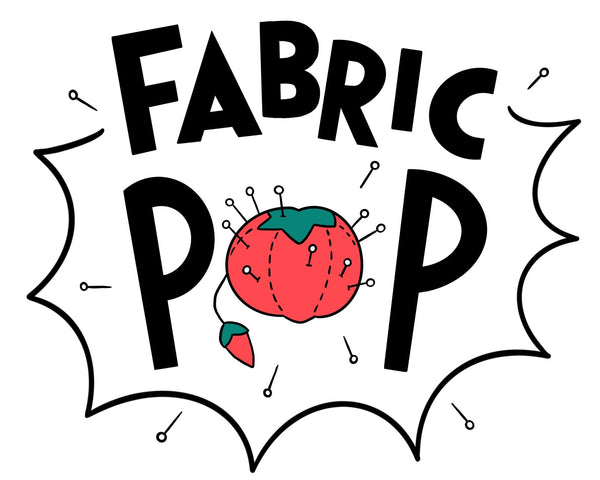
English Paper Piecing: Making a hexagon flower
Share
Stitching a hexagon flower
Hexagons are my favorite English Paper Piecing shape to use. Here I will show you step by step how to stitch together a "hexagon flower". When making a large project with many hexagons, stitching hexagon flowers is a great way to keep your project portable and organized. New to English Paper Piecing? Click HERE to learn to basics and how you can get started with this super fun sewing style.
First, I layout my flower and play around until I am happy with the arrangement. You will be starting with your center hexagon (or hexie) and the one just above it. The black line indicates where you will be stitching. Sandwich those 2 pieces right sides together and you are ready to get started!
Take your threaded needle and start as close to the bottom edge as you can and make a knot. Stitch along the edge the whole length of that side and end with another knot at the top. With each stitch, try to push your needle through just a tiny bit of the fabric and not push through your paper. The less fabric you stitch through, the less visible your stitches will be and the flatter your project will lay.
Now that you have your first 2 hexies stitched together, let's put them back in our arrangement and see where it makes sense to stitch next.
Moving in a clockwise direction, select the next hexie and see where it would attach to the pair already joined together (the black lines).
Sandwich your third hexie right sides together with your second and stitch along that side. To attach the second side we will have to fold over our project to align the next 2 edges.
I like to use a Wonder Clip to keep them in place.
Now you have 3 hexies!
Back at our hexie layout, we can look to see where the next stitches will go. Continue to attach hexies by visualizing how the next piece will attach, flipping it right side down to the last hexie and stitching it on. As your flower grows, you will have to do a little more folding to get the correct edges to align to place your stitches.
Soon enough you will have a full flower!
Once you get the hang of these, you will find that they come together rather quickly!
And I would like to add that you do not need to plan and layout your hexies as I did. A lot of EPP projects are made from a big stack of random colored hexagons or other shapes. If you go truly random, you don't need to be bothered by figuring out a layout, just grab your next hexie from the stack and look at your current progress. How will this hexie attach to the ones I have already stitched? Find those edges, line them up and stitch away!
-











